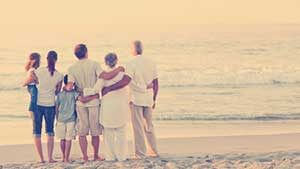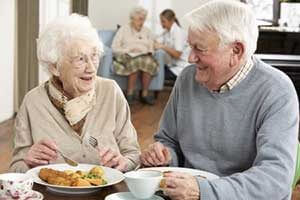Most forms of long-term health care involve helping out with the everyday needs of seniors as opposed to medical care. The activities of daily living (hereafter called ADLs) are important for seniors quite simply because they are essential to not just living, but living a full and healthy lifestyle. Let’s explore this in more detail by examining what basic activities are determined to be ADLs:
The Six Activities Known as ADLs
 The medical and healthcare community measures an elderly person’s ability to look after themselves by assessing how well they cope with six specific activities that are known as ADLs. ADLs are basic tasks that help to maintain our health and quality of life. When we reach a certain age, the completion of such tasks can become difficult. Thus, home healthcare workers strive to address these needs before more complex ones are assessed, as these are the basic building blocks of human functionality. Here are the six activities (in no particular order):
The medical and healthcare community measures an elderly person’s ability to look after themselves by assessing how well they cope with six specific activities that are known as ADLs. ADLs are basic tasks that help to maintain our health and quality of life. When we reach a certain age, the completion of such tasks can become difficult. Thus, home healthcare workers strive to address these needs before more complex ones are assessed, as these are the basic building blocks of human functionality. Here are the six activities (in no particular order):
Bathing
Bathing is not just the act of taking a bath or shower. When a senior’s ability to bathe themselves is assessed, other cleaning and grooming habits including shaving and brushing your teeth or combing your hair are assessed. Someone with Parkinson’s disease, for example, will have trouble carrying out grooming actions which require a steady hand, and will likely need help with some of these tasks.
Getting Dressed
The ability to dress oneself is important for seniors because if they struggle to do so, their quality of life will be diminished. As people get older, and basic tasks become overwhelming to achieve, daily life can potentially become difficult and stressful without a strong support system and the possibility of professional home health care.
Eating
 Eating is an ADL that is one of the most important of the six. This is because not eating enough can be severely detrimental to our health. Eating a balanced diet is necessary so that our body gets the nutrition and sustenance we need. Seniors in particular need to ensure they eat a healthy diet as they are more prone to health issues.
Eating is an ADL that is one of the most important of the six. This is because not eating enough can be severely detrimental to our health. Eating a balanced diet is necessary so that our body gets the nutrition and sustenance we need. Seniors in particular need to ensure they eat a healthy diet as they are more prone to health issues.
Thus, if a senior cannot feed themselves adequately, they will need the help of either a friend, family member, or a professional healthcare worker in order to ensure they don’t become malnourished.
Transferring
Transferring is essentially mobility, but it is a specific measurement of mobility. Transferring is the ability to transfer oneself from a bed to a wheelchair and back again. Movement in general is not considered an activity of daily living. It is common for seniors to have mobility problems, as there are many diseases common in the elderly such as osteoporosis that impair general mobility.
As a result, the healthcare community use transferring as a method of measuring a senior’s ability to look after themselves. This is because this is a necessary movement, even for those who are in a wheelchair: if you can’t move from the wheelchair to the bed by yourself, how do you get a decent night’s sleep?
If you can’t walk very far, have trouble climbing stairs, and struggle to go places with pre-arranged transport, your mobility does indeed detract from the quality of life. However, if you struggle with these movements but are capable of transferring, you are perceived by the healthcare community as being able to carry out one of the six ADLs required to be deemed independent.
Toileting
Toileting is another specific movement that is seen as an activity of daily living, because if you’re not able to do it, you need someone to help. Toileting is being able to get on and off the toilet by yourself. This is another example of how ADLs are highly specific, because general mobility doesn’t come into the equation here. With regards to movement, a senior is able to look after themselves if they can get in and out of bed, and get on and off the toilet, by themselves.
This may appear to be a rather strict definition to apply to the act of being independent, but we must consider the fact that general mobility is not required to carry out the basics. Today’s technological world allows us to be more home-bound than ever before. For example, a senior who can carry out transferring and toileting, but who cannot walk very far, can simply order their groceries online or get a friend or relative to buy them. Thus, they can still live a relatively normal life.
Continence
The final of the six ADLs is known as continence. Continence is the ability to control your bladder and bowel functions. This is important for a senior because lacking control in these areas can have serious health effects. A senior who does not possess this ability may need to consider having a catheter installed, or seeking help in this area from either a close friend, family member, or a healthcare professional.